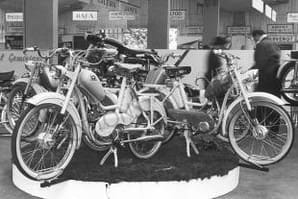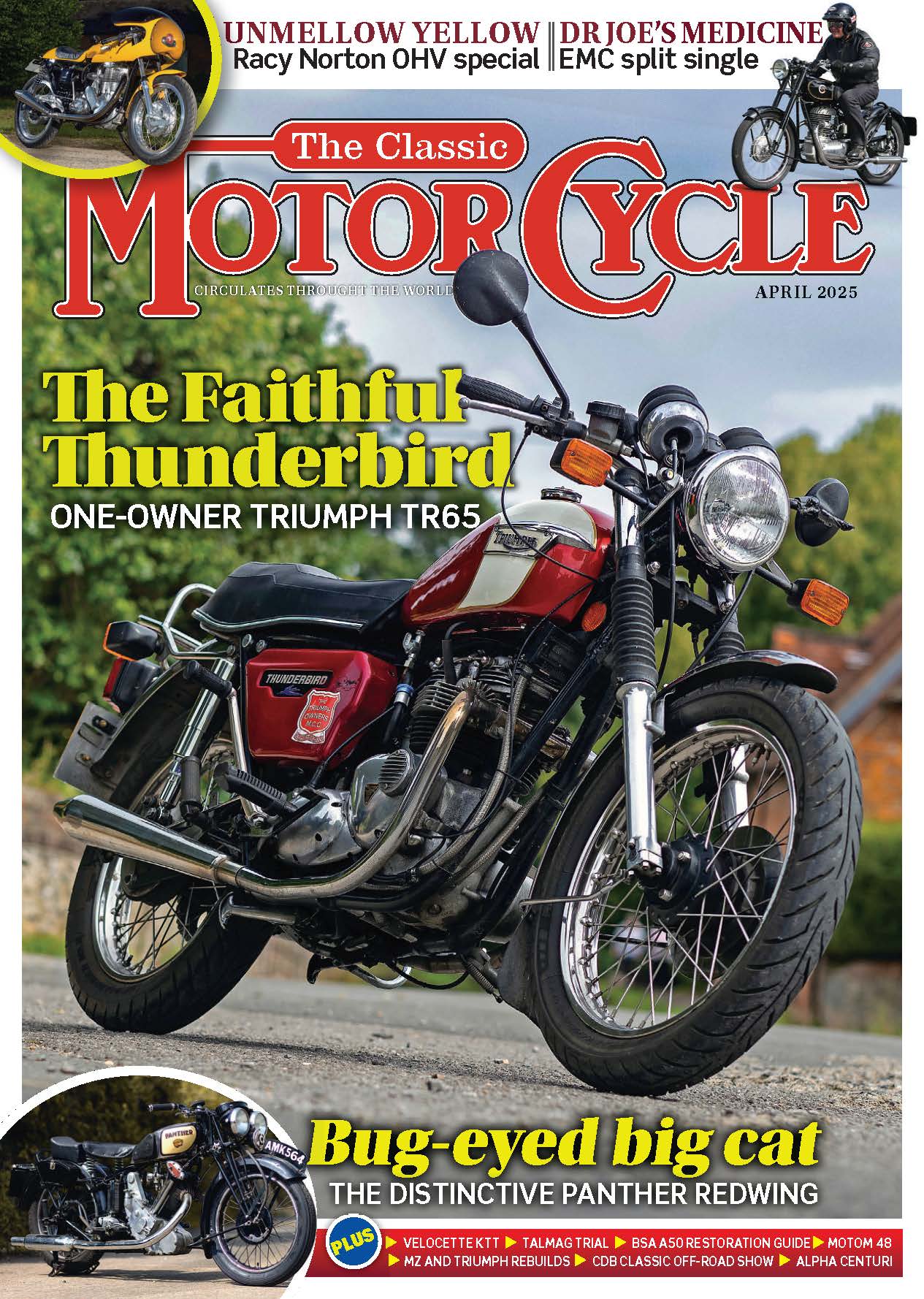
Liberator 1902-c1928 France
Pioneer firm who experimented with clip-on kits before making their first production machines, based on the Werner principle, with the engine mounted within the frame diamond. Used proprietary engines including Antoine, Sarolea and JAP. Very rare.
Liberia Early Twenties and 1951-56 France
Grenoble firm who some historians claim built machines in the early vintage days – though some doubt exists. What is certain is that during the early Fifties they built VAP and Lavalette engined mopeds, Sachs and Ydral 100-175cc lightweight motorcycles and a Sachs-engined, scooter-like machine. Survivors do crop up at French autojumbles.
Enjoy more Classic MotorCycle reading in the monthly magazine.
Click here to subscribe & save.
Lilac 1949-67 Japan
Marashi Ito’s company Marusho began with a two-speed 148cc ohv single cylinder engine, mounted in a pressed steel frame, followed by a tubular design with leading link front fork. They also experimented with a semi-automatic transmission with torque converter. In 1953, Marusho went for a complete redesign to launch an ohv 90cc lightweight with shaft final drive. The concept was successful and was enlarged and modified to give a sizable range of shaft drive singles.
Shaft drive Lilac V-twins came a year later, the model bearing more than a passing resemblance to the German Victoria Bergmeister. For the best part of the next decade, Marusho developed and refined their V-twin range. Then, in 1964, they made the classic error of hurrying a model on to a then strong market, before it was bug free. To try and gain a slice of the American middleweight motorcycle market dominated by BMW, they had come up with the Marusho R92, a 493cc ohv horizontally opposed twin with shaft final drive. Beset with teething troubles and reliability problems, it wasn’t helped by the market turning at the same time. Sales dropped and Lilac were finished.
Never exported to the UK, the V-twin Lilac has become an iconic collector’s item among enthusiasts of early Japanese motorcycles. Spares are difficult but can at times be sourced, at a cost.
 Lincoln Elk 1902-24 UK
Lincoln Elk 1902-24 UK
Famous British pioneer marque, built by Kirby and Edwards of Lincoln, which gradually faded from the scene after WWI. Designed by James Kirby, early production comprised 225cc and 400cc automatic inlet valve over side-exhaust valve direct belt drive models with their own engines. Next, they made up to 500cc side-valve singles with various gear systems before WWI, including a two speed model which used belt final drive for high and chain for low gear, with selection made with contracting band clutches.
After WWI, production centred around a side-valve range of 349cc to 596cc singles and a 750cc V-twin. By 1924 sales had dwindled and manufacture ended. Veteran models are sought after, charming and different, but with no spares availabile, a marque for those with a well kitted workshop!
Linto 1965-70 Italy
One for the classic motorcycle racing enthusiast with deep pockets! Famous Italian designer Lino Tonti conceived the idea of mating two ohv 248cc Aermacchi Ala d’Oro engines on a common crankcase. But rather than take the logical step of making a V-twin, Lino’s 496cc racer was a parallel twin with the barrels angled 10 degrees above horizontal. Driving through a six-speed gearbox, early models developed 61hp at 9800rpm, increased to 64hp by 1969.
Raced both nationally and internationally, the Linto had its best season in 1969, finishing second behind MV Agusta in the 500cc constructors’ world championship, with the Swiss rider Gyula Marsovszky second behind Giacomo Agostini for the riders’ title. Other Linto riders include Alberto Pagani, who won the 1969 Nations GP for Linto, Australians John Dodds and Jack Findlay, Brit Steve Ellis and Kiwi Keith Turner. Possibly an odd choice of motorcycle to dwell on within this guide, but Lintos are different, repairable, and an example of a brave attempt to beat the big boys, and are occasionally available – if you have the funds.
 Lito 1959-65 Sweden
Lito 1959-65 Sweden
Successful specialist scramblers, often powered by modified BSA or Husqvarna 500cc ohv single cylinder engines, or a Folke Mannerstedt designed unit. Experimented with clutch and gearbox design to suit the needs of the competitive scrambler and ridden to success by Gunnar Johansson, Sten Lundin and Bill Nilsson.
Lloyd c1903-22 UK
Production was started by WJ Lloyd, who had been involved with Quadrant. Early models included 21⁄2 and 31⁄2hp singles, later joined by small V-twins. From 1908 they were sold as the LMC. After WWI manufacture restarted on a small scale, with big singles and V-twins.
Locomotief 1957-66 Holland
Distinctive Sachs and Pluvier engined mopeds, which are sought after in their native country.
Lohmann 1950 – c1954 Germany
Compression ignition 18cc two-stroke cycle attachment manufactured at Bielefeld, Germany. Performance control is by raising and lowering the engine's compression ratio. To effect this, the cylinder barrel is moved by cable operated by a handlebar control lever. A beautifully made, tiny attachment, which today is highly prized collector’s item.
Lohner 1950-58 Austria
Specialist moped and scooter maker from Vienna who used Ilo, Sachs and Rotax engines. Leading scooters included the 98cc Sachs engined L98T, 199cc Rotax powered Super-Roller L200, Sachs engined 125 Rapid and Ilo powered Rapid 200. Unusually, they built a Rapid 200 with integral sidecar and only one motorcycle, the miniature 47cc Sachs engined Sissy. As common proprietary engines were used, many mechanical spares are available but little or nothing for rolling chassis.
Louis Clement 1919-32 France
Advanced models, some with 598/996cc ohc V-twin engines, built at Louis Clement’s Boulogne/Seine workshop. After 1928, they concentrated on utility two stroke lightweights.
 Lube 1949-65 Spain
Lube 1949-65 Spain
Company from Bilbao, headed by Luis Bojarano, which for many years were associated with the German NSU marque. Many models comprised NSU 49-125cc two-stroke, 125 ohv and 250 ohc NSU engines housed in Bojarano designed chassis. As NSU reduced motorcycle involvement, the German two-stroke tuning wizard Hermann Meier – who had worked in the BSA competition shop – joined Lube in the early Sixties to develop two-stroke engines for them, work which continued after Meier’s departure for Royal Enfield.
Good availability of NSU engine spares makes the Lube an interesting diversion from the norm.
Lucifer 1928-56 France
Parisian maker Mestre and Blatge, who built a range of up to 500cc machines, using MAG and Chaise proprietary engines. Popular models included 75cc Velomotor type machine and basic 175cc motorcycle with outside flywheel. Also market as Genial Lucifer.
Lutz 1949-54 Germany
Production began with 50cc motorised bicycles and the 58cc R3 scooter. Strange looking, the Lutz had an angular front mudguard and wire mesh side panels enclosing the engine. In 1951, Lutz came up with the 174cc RI 75cc. ![]()
Advert
 Enjoy more The Classic MotorCycle reading in the monthly magazine. Click here to subscribe.
Enjoy more The Classic MotorCycle reading in the monthly magazine. Click here to subscribe.




